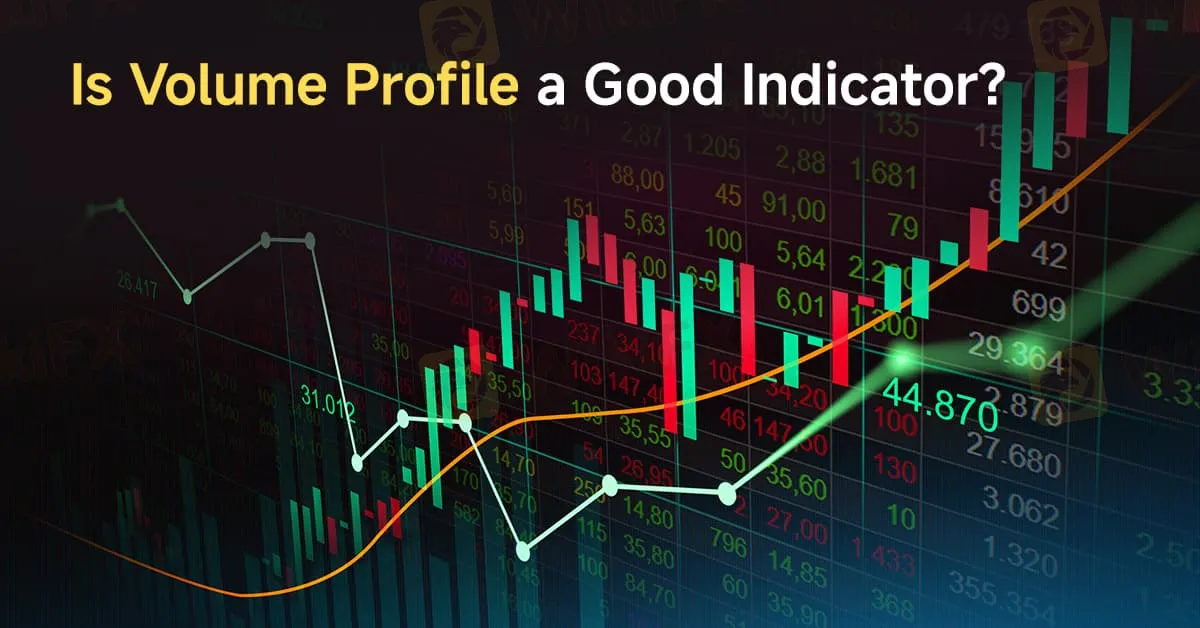简体中文
繁體中文
English
Pусский
日本語
ภาษาไทย
Tiếng Việt
Bahasa Indonesia
Español
हिन्दी
Filippiiniläinen
Français
Deutsch
Português
Türkçe
한국어
العربية
Is Volume Profile a Good Indicator?
Abstract:The Volume Profile shows the amount of volume traded at different price intervals over a specified period. It is displayed as horizontal bars, usually overlaid on the price chart. Each horizontal bar represents the volume that occurred in that price range over a specified time. The Volume Profile can be set to the current session, such as that day, or multiple sessions, like the total Volume Profile for the last twenty days.

What Is Volume Profile?
The Volume Profile shows the amount of volume traded at different price intervals over a specified period. It is displayed as horizontal bars, usually overlaid on the price chart. Each horizontal bar represents the volume that occurred in that price range over a specified time. The Volume Profile can be set to the current session, such as that day, or multiple sessions, like the total Volume Profile for the last twenty days.
Why Is Volume Profile Important?
Most Technical Tools Look at the Same Information
Most technical analysis indicators derive calculations from the price, which is why most of them lag. Because theyre derived from price, most indicators usually show information traders can see from the price chart alone. In short, most technical tools have everyone looking at the same information and chasing the same ideas, giving little to no edge.
Volume Profile is Different from Most Other Technical Tools
Volume Profile is not derived from price or lagging, which is rare in technical analysis. Volume Profile shows the activity that ultimately drives price movement—trading volume activity at different price levels. This is not data that traders can see from the price chart alone or even traditional volume bars.
Volume Profile Has Incredible Accuracy Down to the Lowest Timeframes
Most other indicators pick up a lot of meaningless noise on lower timeframes, reducing their accuracy. Volume Profile suffers less from this flaw because it uses “primary data” rather than being derived from the price or other data.
Incorporating Volume Profile into Your Trading Strategy
Decide How Far Back to Build the Volume Profile on Your Chart
For example, a 20-day Volume Profile setting will build the cumulative Volume Profile over the last 20 trading days.
Mark Out the Distribution Blocks and Ledges to Find Support and Resistance Levels
Determine Price Levels Above or Below to Be Comfortable Being Long or Short
Common Mistakes to Avoid When Using Volume Profile
Not Using Multiple Time Frame Analysis
Not Identifying Distribution Blocks
Overtrading Unclear Setups
Not Having a Trading Plan or Managing Risk
Pros & Cons of Using the Volume Profile Indicator
Pros
1. Volume Profile lets you see significant levels that often cannot be found from the price chart alone.
2. It is not a lagging indicator.
3. Traders can use Volume Profile independently or with other strategies.
Cons
1.It is a discretionary tool without fixed rules that takes time to learn.
2.Not all charting platforms support Volume Profile.
Conclusion
Volume Profile is a unique and powerful tool in the realm of technical analysis, providing insights into market behavior that other indicators might miss. By highlighting key price levels based on trading volume, it offers traders a distinctive edge. However, like any tool, it requires practice and understanding to use effectively. Integrating Volume Profile into your trading strategy can enhance your market analysis and trading decisions, but its essential to be aware of its limitations and ensure it fits within your overall trading plan.

Disclaimer:
The views in this article only represent the author's personal views, and do not constitute investment advice on this platform. This platform does not guarantee the accuracy, completeness and timeliness of the information in the article, and will not be liable for any loss caused by the use of or reliance on the information in the article.
Read more

MiCA Unlocks EU Crypto Market, but National Tensions Rise as Gemini and Coinbase Near Approval
Gemini and Coinbase are poised to become the first major crypto firms licensed under the EU’s MiCA regulation, opening the door to 27-country access. But the fast pace of approvals in some countries—like Malta and Luxembourg—has triggered concerns among regulators about uneven oversight and the risk of regulatory arbitrage.

Advantages of Using EA VPS for Trading - Detailed Guide
Unlock faster trades, 24/7 reliability, top security, and global market access with an EA VPS. Get expert setup tips and benefits in this 2025 trading guide.

How to Choose the Right VPS for Forex Trading
Learn how to choose the right VPS for forex trading with WikiFX VPS plans. Compare Standard, Ultra, and Ultra Plus for speed, uptime, and cost. Ideal guide for 2025 traders.

Technical Analysis Tools in Forex Trading
Are you aware of the technical analysis tools that greatly determine the forex market’s direction? What do these tools do and why do avid traders eye these every day? If not, then start becoming aware of these tools that greatly dictate your forex earnings over time. Without any further ado, let’s start discussing these tools and their impacts.
WikiFX Broker
Latest News
ZFX: A Closer Look at Its Licences
XM Rolls Out New Forex Trading Competition Platform for 2025
Should you buy or sell US dollars in the next three to six months?
Tradehall Broker Review 2025: Read Before Trade
Inside MBI: The Billion-Dollar Ponzi Scheme That Shook Malaysia
EU Regulators Imposed Over €71M in Sanctions in 2024, ESMA Calls for Enforcement Convergence
Danske Bank expects the European Central Bank to make its final interest rate cut in September.
Retirement Dreams Shattered: Don't Do This To Yourself!
MiCA Unlocks EU Crypto Market, but National Tensions Rise as Gemini and Coinbase Near Approval
IronFX Review 2025: Is This Broker Trustworthy or a Scam?
Currency Calculator


